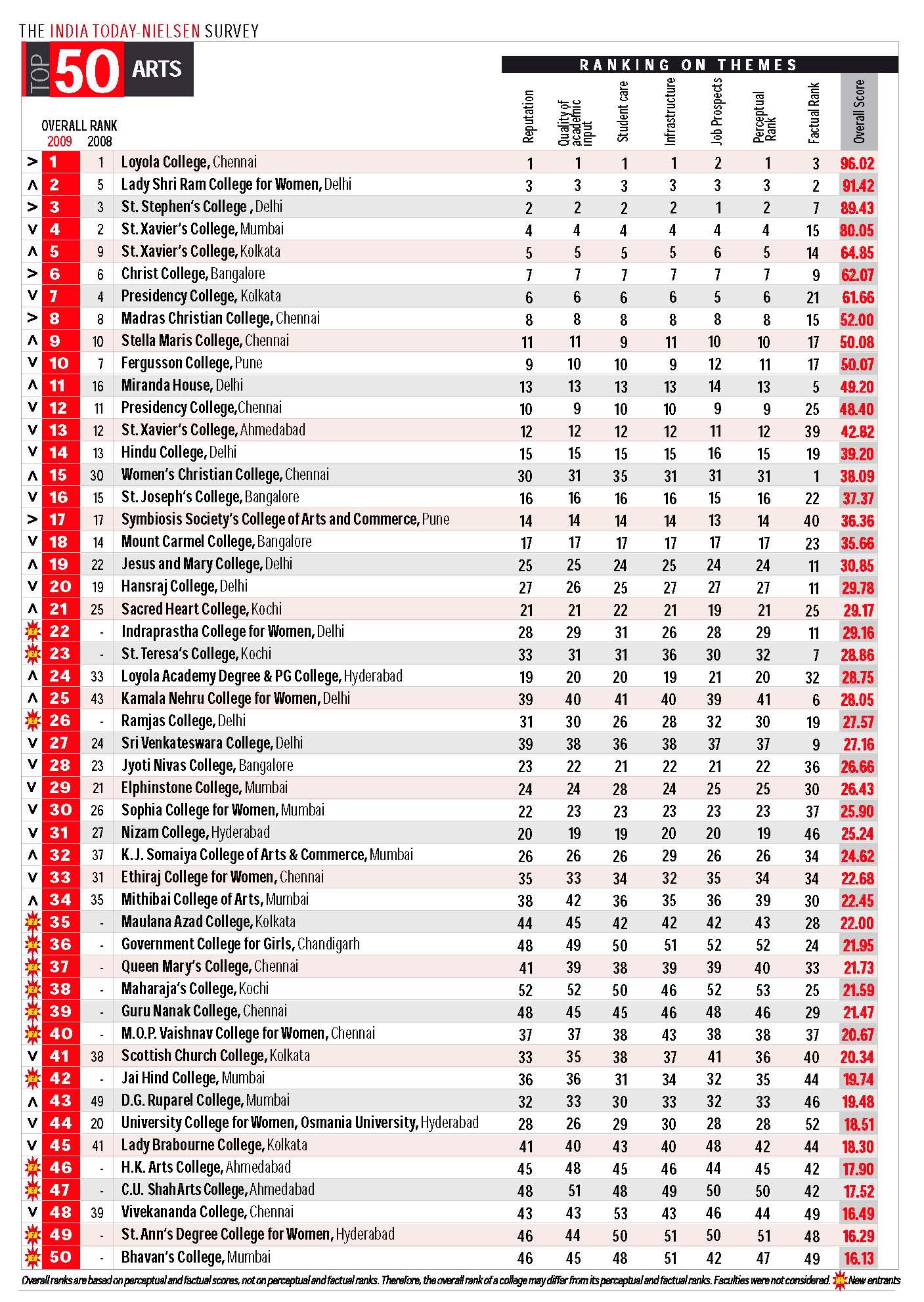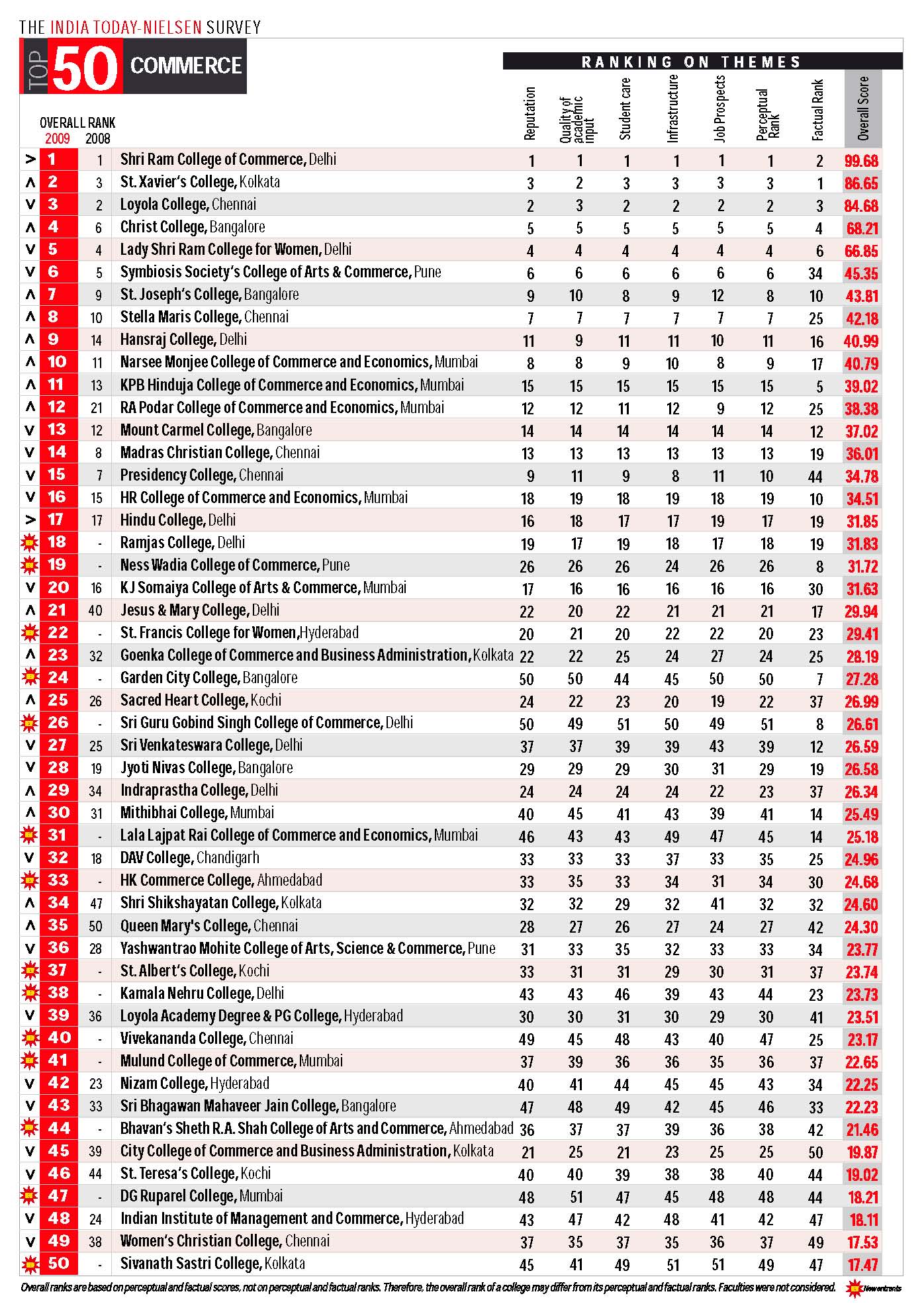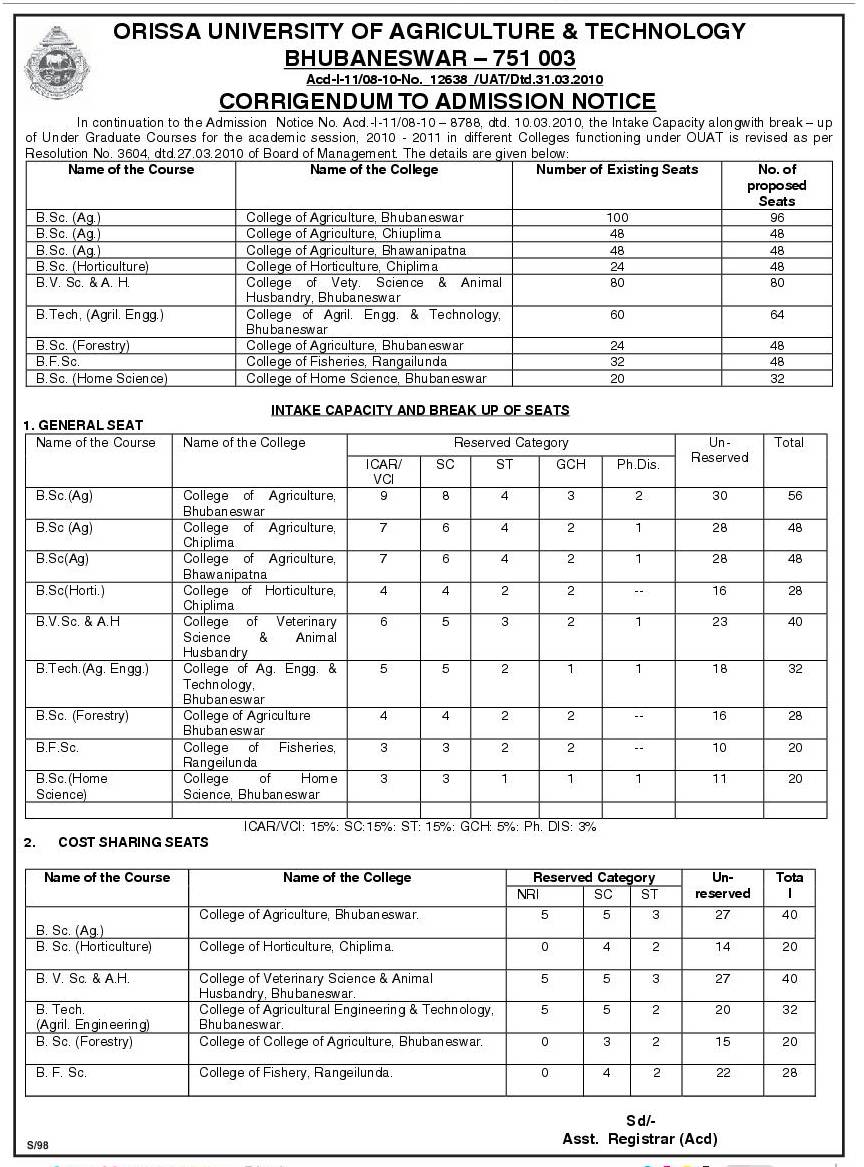Using the ranking of business schools given in a Businessworld article and adding a few well-known business school that were not part of that ranking, following is a clustering of those schools with respect to the metropolitan areas of India.
| Metropolitan areas |
Top ranked management schools |
| Delhi, NOIDA, Gurgaon, Ghaziabad, Faridabad (25 schools) |
MDI (8), IIFT (9), IMI (14), IMT (15), IIT D (17), BIMTECH (top 30), EMPI (42), NDIM (44), Fore (46), IMS (48), NILM (49), Amity (51), NIMT (53), Accurate (57), DSPSR (59), Jagannath (59), JK (64), ITS (69), Skyline (71), Jagan (75), NSB-NILM (81), APIM (84), SMS (87), Shiva (87), IMR (101) |
| Mumbai (14) |
NIIE (5), NMIMS (7), Bajaj (10), IIT B(11), Jain (12), Somaiya (16), Welingker (23), Sydenham (30), ITM (39), St Francis (58), Thakur (65), IMSR (86), SIES (90), NCRD (102) |
| Kolkata (7) |
IIM C (2), IISWBM (33), U Calcutta (61), Eastern (78), ISBM (92), CMS (104), Eastern (108) |
| Bangalore (6) |
IIM B (top 5), Acharya (20), IFIM (53), PES (62), IBMT (80), Dayanand (97) |
| Ahmedabad (4) |
IIM A (1), Mudra (25), Nirma (26), BK (79) |
| Hyderabad (7) |
ISB (top), Icfai (top 20), IPE (55), Siva (66), Vignana (85), Dhruva (91), Aurora (100) |
| Bhubaneswar (5) |
XIMB (13), RCM (30), KIIT (77) , Srusti (99), Biju P (106) |
| Chennai (4) |
Great Lakes (18), Loyola (19), IIFMR (38), MOP (110) |
| Pune (8) |
Symbiosis (24), Suryadatt (49), Balaji (56), Vaikunth (62), Balaji (73), ISBM (76), MIT (103), Balaji (108) |
| Kozhikode |
IIM K (4) |
| Jamshedpur |
XLRI (3) |
| Indore |
IIM I (6), Prestige (52), IBMR (66) |
| Lucknow |
IIM L (top 10), Jaipuria (68), |
| Manipal |
Pai (21) |
| Coimbatore |
PSG (22) |
| Bhopal |
IIFM (27) |
| Varanasi |
BHU (28) |
| Kharagpur |
IIT KGP (29) |
| Goa |
Goa Inst of M (32) |
| Nagpur |
IMT (34) |
| Jaipur |
NIAM (34), IRM (96) |
| Trichy |
Bharatidarshan (36), NIT (37) |
| Chandigarh |
ISB-branch (new; would be top 10), Gian Jyoti (40) |
| Cochin |
Sc of Comm and Mgmt (40) |
| Jalandhar |
Lovely (42) |
| Meerut |
Master (44) |
| Ludhiana |
Punjab C (70) |
| Pondichery |
SMS (71) |
| Neral, Maharashtra |
AICAR (74) |
| Thiruvanthapuram |
Kerala U (81) |
| Jagadhri, Haryana |
Maharaja (83) |
| Salem |
Sona (89) |
| Mathura |
HIMCS (92) |
| Allahabad |
United (94) |
| Baroda |
MS Patel (95) |
| Visakhapatnam |
Integral (98) |
| Dehradun |
IMS (105) |
| Ujjain |
Mahakal (107) |
| Ranchi |
ISM (111) |
Based on the above clusters following are some remarks.
- The New Delhi metropolitan area has the maximum number of top business schools (25) followed by Mumbai (14). The population of these two areas explain why that is the case.
- The next tire is: Hyderabad (7), Pune (8), Kolkata (7) and Bangalore (6).
- Closely following them are: Bhubaneswar (5), Ahmedabad (4) and Chennai (4)
With regards to Bhubaneswar, besides the above ranked schools there are some other good schools that are in existence and some more are coming up. The one that exists are: HDF and IITTM; the ones that are coming up soon are: campus of IMI and campus of BIMTech; the ones that will come up further down the line are: Business schools of Sri Sri University and Vedanta University. One thing to note is that all the top ranked business schools in Bhubaneswar are private ones.
June 20th, 2010
Following is from a report in tathya.in about the discussion of Xavier University in the Odisha Cabinet.
Ananga Udaya Singh Deo has favoured Xavier Institute of Management Bhubaneswar(XIMB) to set up Xavier University in the state.
Minister Planning & Coordination speaking in the State Cabinet on 9 June, said if any institution merits for a University status, it is XIMB.
Giving out details Minister said that XIMB is serving the State of Odisha since 1987 has more than 4000 alumni, out of whom more than two third are from Odisha.
Mr.Singh Deo said educational institutions with little known academic excellence are allowed to set up universities, where as proposal of XIMB for a University is pending for a long time.
Cabinet was given details on XIMB by Mr.Singh Deo as he said being a Jesuit Institution, XIMB can easily tie up with other Jesuit Universities from all across the world such as University of Santa Clara, Loyala Chicago, Georgetown, St.Louis and Marquette etc.
Speaking about the credibility of XIMB, he said that for 180 seats of PGDM, XIMB has attracted 20,000 applications.
He said that in 2010 it self 48 foreign students have expressed their desire to come and spend a semester at XIMB and by making it a University more foreign students will be attracted.
XIMB has collaborations with 12 international universities and more are in offing, revealed the Minister Planning & Coordination.
Pointing out about the cent per cent placements of its students and highest placement records in Odisha has proved the credentials of XIMB in the country, said he.
Involvement of XIMB in the development of most backward districts of Odisha in KBK, where it is planning to set up its second campus will go a long way if they are allowed to set up a University, added he.
So Mr.Singh Deo urged Minister Higher Education to place the Xavier University Bill for approval of the Cabinet as soon as possible for the best interest of the state.
Debi Prasad Mishra, Minister Higher Education sounded on a positive note.
Although it is good that Xavier University was discussed in the cabinet, it is really unfortunate that the bill was not brought to the cabinet, while bills corresponding to lesser institutions were brought to the cabinet.
Following is from another article in tathya.in.
Decision makers in Odisha have failed to visualize the implications of delaying the establishment of University of Xavier Institute, which is going to cost the state dearly, feel educationists and intelligentsia.
Xavier is a brand name well known in Odisha (through XIMB), India and abroad and educational institutions bearing the Xavier name are highly regarded in India and abroad.
While the State Government is sponsoring proposals of institutions little known for their academic excellence, they have all along ignored the proposal of Xavier Institute of Management Bhubaneswar (XIMB) for a univarsity.
Just for comparison purposes, there is no Sri Sri labeled educational institution that is in any rankings.
Similarly, there is no Vedanta named higher educational institution.
And last but not the least Krupaluji Maharaj has been given land to set up a University in Odisha!!!
The Jesuit Society of India has established the XIMB.
XIMB is a top management institute in India and ranked very highly and in fact, it is the highest ranking institute in Odisha in any field.
The next closest is NIT Rourkela which is ranked in the thirties among all engineering colleges/institutes.
In India: Besides XIMB, XLRI (Xavier Labor Research Institute, Jamshedpur) is a top 5-7 ranked management institute in the country.
Similarly, XISS (Xavier Institute of Social Services, Ranchi) is also a well-established name.
In addition there are many other Jesuit institutions that are well regarded in India.
This includes the various Loyola colleges.
In US: There are three Xavier Universities in USA in Cincinnati, Chicago and Louisiana.
In addition there are about 30 other Jesuit universities in the USA which include famous universities such as Georgetown University.
If a Xavier University is made in Odisha, it will be the first Xavier University in India.
The above facts make a Xavier University in Odisha very special.
By being the first Xavier University in India, it will have the first mover’s advantage.
By virtue of being the first Jesuit University in India, a Xavier University in Odisha will be in a position to get help from the 30 Jesuit Universities in US.
XIMB is ready to start construction that will make it a university, said sources.
XIMB had already planned for expansion and was ready to start construction for some time.
The XIMB Director Father P T Joseph has already received permission from the Jesuit society to set up Xavier University.
This has been also discussed in the recent board meeting of XIMB.
Several new programs that will be part of the university are already approved by the XIMB governing board.
Father Joseph, the Director of XIMB notices the lack of good arts and commerce programs in Odisha (the IIT, NISER, NLUO, XIMB, IIPH, AIIMS etc. take care of the engineering, science, law, business, public health and medicine areas) and would like the Xavier University to have top notch world class programs in arts and commerce.
The top ranked Arts and Commerce programs in the country include many other sister Jesuit institutions such as Loyola Colleges, St. Xavier’s colleges and St. Joseph’s colleges.
Despite all of the above, the Odisha Government is dilly-dallying in establishing the Xavier University in Odisha.
This is especially bad because a sister institution of Xavier, the Georgetown University of the US is interested in opening a branch in India.
If only the Odisha government had established Xavier University, it could have approached Georgetown to open its branch in Bhubaneswar.
Because of the lack of foresight of Odisha, the state may not only remain backward in arts and commerce programs, but it may also lose the chance to get a branch of the famous Georgetown University to Odisha.
June 9th, 2010
Following are excerpts from a report in tathya.in. (The website of the Centurion group is http://www.cgi.ac.in/.)
… Proposal to establish the Centurion University of Technology and Management (CUTM) by the Department of Higher Education (DHE) has received green signal of the Chief Minister Naveen Patnaik.
… And latest is Centurion University of Technology and Management (CUTM) in Gajapati will go a long way in serving the state in general and KBK in particular, said a senior official.
Once the proposal receives clearance of the State Cabinet, a bill will be presented in the Odisha House to enact a law to establish the university by JITM Trust.
This is a great move by the Odisha government. In recent years JITM of Parlakhemundi has had many innovative programs. Making it a university is a just reward and a big boon to the backward Gajapati area.
I hope other areas of Odisha take note of this and try to learn from this. It is easier for a government to help, if people take their own initiatives.
Another institution that deserves similar reward is the Gandhi group of institutions, with its initial (and the best) college GIET in Gunupur, also in a backward district (Rayagada). I hope the Odisha government also upgrades the GIET in Gunupur, the largest engineering college in Odisha, to a university.
NIST Berhampur also deserves similar reward as it is located in Ganjam (also considered a backward district and part of the backward South Odisha) and is among the top engineering colleges in Odisha.
Based on quality, Silicon Bhubaneswar also deserves to become a university. Similarly, Hi-tech because of its medical college also deserves to become a university. (Note: The two other private medical coleges of Odisha are part of deemed universities.)
In general, the government should make universities out of any engineering college that is in a backward district but yet is among the top 20 (with respect to student preferences), groups with private medical and engineering colleges in any location, and top 5 private engineering colleges in any location. This should be done every 4-5 years so that every college does not become a university.
Following are excerpts from a report in tathya.in on IIIT Bhubaneswar.
State Government has decided to accord the Unitary University status to IIIT-Bh so that it will enjoy academic, administrative and financial autonomy.
Chief Minister Naveen Patnaik has given consent to the proposal of Ramesh Chandra Majhi, Minister IT in this regard.
… State Cabinet will take a call on the issue on 9 June, said sources.
June 8th, 2010
The revised concept note is at the same location where the earlier concept note was: http://www.education.nic.in/uhe/Universitiesconceptnote.pdf. (We also have a local copy of it at http://www.public.asu.edu/~cbaral/concept2.pdf.) The earlier note was 21 pages and the new note is 24 pages. (We have kept a copy of the earlier note at http://www.public.asu.edu/~cbaral/concept1.pdf.) We gave excerpts from the earlier note at https://www.orissalinks.com/archives/3136. Following are some excerpts from the revised concept note that was absent in the earlier note.
Each University would focus on one area or problem of significance to India and build an ecosystem of research and teaching around different related disciplines and fields of study, which are relevant thereto, and search for solutions that are globally valid and in the process develop education at undergraduate and higher levels. For illustration such areas/problems of relevance could be the challenges of urbanization, environmental sustainability in relation to growth and progress of life on earth, public health.
…
MODE OF ESTABLISHMENT:
While Government is seen to be the prime mover in respect of these Universities, in terms of finances, innovation universities would also be set up in the Public-Private Partnership (PPP) mode using the MoU (Memorandum of Understanding) route with promoters having significant interest in higher education and a demonstrated capacity to deliver, either on their own or in collaboration with those who have such capacity, higher education of a high standard. Financial and academic/ research credentials of those promoting partnerships would be a determinant of their suitability. Alternatively, Universities of world-class standards elsewhere in the world may also be invited to set up its establishment and research programmes functioning under the broad parameters of the law governing such an initiative, while the teaching function of the University (except for the scholarships/fellowships sponsored by the Central Government) shall be fully funded by the promoting University. Corresponding modifications shall be made in the governing law to free such Innovation Universities from the oversight of Government which are related to funding of the operational aspect of the University namely its teaching function. However, accountability to Parliament shall extend to the research grants or Endowment funds provided to the University by Government.
Three distinct approaches are possible in establishing Innovation Universities – first, new green field Innovation Universities focused on distinct issues of national importance to India and building various disciplines and fields of research around such issues.
The second approach is that of identifying a few of the existing universities and other institutions of repute and with marginal top-up investment encouraging them to attain world class standards through innovation in chosen areas of knowledge. The advantages are obvious, the investment would be marginal, it would be an acknowledgment of our existing national assets, a recognition that several faculties within such institutions and universities are indeed world-class or near world-class, and that innovation in knowledge does take place, even if in a limited manner, in some of our institutions and universities. The attendant problems of such an approach are obviously that of managing the transition and change; of selecting through transparent and competitive modes those few institutions and universities from the existing ones, which could be invested in; of identifying those disciplines or areas of knowledge which need to be encouraged for transiting in to the sub-sets that would in aggregate overwhelm the other sectors so that those few deficiencies that remain in them do not come in the way of transition to Innovation Universities.
The third approach is that of identifying a few educational hubs (cities) in the country where a few institutions and universities of excellence by national standards are located, and creating the architecture of an Innovation University by building synergies for inter-disciplinarity and strong research and teaching among such institutions. The advantages of this geographical approach are again that of marginal investments maximizing returns, assured outcomes if it works, recognition that some of our specialized institutions are at par with globally reputed universities at least in respect of the disciplines within foreign universities that such institutions specialize in. The problems with the approach include the challenges of managing change and resistance to change, overcoming inter-personal issues and neutralizing ‘domain egos’, finding iconic personalities to head the super-structure or the ‘shell’ built over institutional and organizational pillars. It would be difficult to make different organizations and institutions volunteer to forego the legacy built over time, but in theory such a geographical approach is also feasible.
The "Mode of Establishment" section is completely new and was not there in the earlier concept note. The third approach mentioned above is similar to the idea mentioned in the TOI article by Prof. Devesh Kapur. Although the concept note mentions it, from the tone it seems they do not think that the idea is practical at this point of time. If and when the innovation universities become a brand it may become practical. Now the possible constituent units have their brand identity and coming together of several such units to form an unbranded entity may not pass muster.
With the above information, now one can guess a bit more about the intentions behind the report mentioned in https://www.orissalinks.com/archives/4441. My interpretation is that for innovation universities that will be made based on the second and third approach the government may be willing to shift the location inside the state to a location that is more suitable for the 2nd and third approach as they are location specific.
May 12th, 2010
Sources suggest that the Xavier University Bill is getting finalized and may be introduced in the Odisha assembly in the upcoming assembly session. There is plan that the proposed Xavier University (which will be established by the XIMB people) will have undergraduate programs including in Arts and Commerce.
This would be a Godsend. While Odisha now has top notch programs in Engineering (at IIT, NIT, VSSUT, CIPET), Science (NISER), Law (NLUO), Business (XIMB), Social Work (NISWASS), Public Health (AIPH, and soon IIPH) and Education (RIE), and soon will have a top notch program in fashion design (NIFT) and medicine (AIIMS-like Institute), it does not have top programs in Commerce and Arts. Thus the proposed Xavier University offering these programs will fill a huge lacuna. There are several reasons I believe that the Arts and Commerce programs at the proposed Xavier University will be top notch.
- They have track record in Odisha and India. Their XIMB is among the top ranked business schools in the country.
- The top ranked Arts and Commerce programs in the country include many other sister Jesuit institutions such as Loyola Colleges, St. Xavier’s colleges and St. Joseph’s colleges.
- Xavier University being a university will be able to modernize and revise its programs at will and thus will have advantage over other colleges that need to work with their universities. (Some of the top ranked colleges are now autonomous though.)
- Many of the other top ranked colleges are uni-disciplinary. Xavier University will be able to share faculty among multiple programs and thus able to create more multi-dimensional programs.
The proposed Xavier University offering top notch arts and commerce programs would help the other institutions to improve their arts and commerce programs and may even encourage other groups (such as KIIT and ITER) to establish good programs in Arts and commerce.
Thus the Odisha government should not delay and speed up the creation of Xavier University.
Following is from India Today’s 2009 list of top ranked Arts and Commerce programs in India.


May 2nd, 2010
In 2008 Andhra created 3 new IIITs in rural areas of the state. These three IIITs at Basar, Nuzvid and RK Valley are the components of the newly established Rajiv Gandhi University of Knowledge Technologies. Following are excerpts from a report in Times of India that talks about hiring of faculty for these IIITs.
The institutes are going through a crisis at present due to inadequate faculty and lack of infrastructure because of which the state government has decided to reduce the intake of students by half — from 6,000 per year to 3,000 — from the coming academic year.
… “About 140 post-graduates from the five Indian Institutes of Technologies (IITs) and Indian Institute of Science, Bangalore have come forward to teach the rural students even though they have lucrative offers on hand from the corporate sector and international institutes,” said R V Raja Kumar, vice chancellor of the Rajiv Gandhi University for Knowledge Technologies under which the three institutes function.
At least half of the selected post-graduates and PhDs are Andhrites and have expressed their willingness to stay among the students and impart engineering education in the country, the VC said. Raja Kumar himself is an IITian from Kharagpur. “The hunt for talent will continue. We want to recruit post-graduates from the institutes of national and international repute in the country,” the VC said.
.. “This is for the first time in India that campus recruitment is being done by a university for the recruitment of the faculty. The response has been very encouraging and several post-graduates have volunteered to join the institutes located in remote areas,” said Raja Kumar.
In Odisha KIIT has been recruiting heavily from IITs. We reported on it in https://www.orissalinks.com/archives/2492. I hope the Odisha government engineering colleges, IIIT Bhubaneswar, SUIIT and VSSUT follow a similar approach and go for campus recruitment in the IITs.
The program at these IIITs in Andhra are different from programs anywhere else. See http://www.rgukt.in/program.html. They offer 6 year dual degree programs after the 10th class and take students mainly from the rural areas.
May 2nd, 2010
Following is an excerpt from a report in Times of India.
The Prime Minister’s Office is having second thoughts on letting 14 world class innovation universities come up in places selected during Arjun Singh’s tenure.
Sources said the system of first selecting the sites and then building the universities will not work in case of these institutions since the concept is different than a usual university. Besides, there has been a major change in the concept of innovation universities from the time of Singh. The HRD ministry in its latest concept note has suggested that apart from the government even private educational be allowed to set up these universities.
On the places selected during Arjun Singh’s tenure, an official said, “Innovation universities should come up in places that can attract students and world class faculty. Some of the sites selected earlier will not be able to live up to the expectations from a world class university.”
But the twist in the tale is that many of the states have already finalized the sites for these institutions and will definitely protest in case the Centre changes its stand now. In many cases, states have shortlisted sites away from what HRD had finalised. This could become a problem.
… Gujarat and Madhya Pradesh have selected sites in Sabarkantha and Sehore, respectively. But since these two places were not shortlisted by the HRD ministry, Gujarat has been asked to finalise a site near Ahmedabad or Gandhinagar and MP in an area near Bhopal.
I think, one may get a wrong interpretation of the above report until they read the last paragraph. Also, Sehore is near Bhopal; it is only 38 kms from Bhopal. So something is missing; perhaps the reporter or his source did not do a proper fact-checking.
However, if the center indeed plans to change some of the sites that it had announced earlier, then the sites that may be in most danger may be the sites that are not near state capitals. But that itself will be very difficult after the series of announcements in the parliament and other venues.
See http://www.orissa2020.org/appendix/location-of-proposed-national-universities for the comparison of the sites that were initially picked. Finally, the center would not dare to take away one of these universities from one state and give it to another state.
April 29th, 2010
Update: For some time XIMB has been planning to expand in the Bhubaneswar area. See https://www.orissalinks.com/archives/1679. It is also interested in becoming a private university. See https://www.orissalinks.com/archives/2788. A recent Business Standard report says the following about the campus in the Bhubaneswar area:
XIMB which had kicked off its operations in the city in 1987, aimed to operationalize its second campus in the state by 2012, the year marking the silver jubilee …
… P T Joseph, director, XIMB said, “We will be coming up with two new campuses in the state- one at Bolangir and the other at Khurda. The Orissa government has already alloted us 35 acres of land at Khurda and has agreed to provide 25 acres of land on the outskirts of Bolangir town.”
The XIMB campus at Bolangir will exclusively focus on the Rural Management Programme and will have an intake of 120 students.
“Our campus at Bolangir will be a fully residential facility with a built-up area of 1.55 lakh sq ft and it will only offer the Post Graduate Diploma course in Rural Management. We will phase out the Rural Management programme at our existing campus in Bhubaneswar after the establishment of the Bolangir campus”, Joseph added.
XIMB’s campus will come up about seven km from Bolangir town and the institute wants to offer a rural ambience to the students pursuing the Post Graduate Diploma in Rural Management.
XIMB’s campus at Khurda is coming close to the campus of Orissa Engineering College.
It also seems to be making progress in the university front as tathya.in has a headline saying "XIMB University in offing".
See http://www.tathya.in/news/story.asp?sno=3962 for the news item on this in tathya.in. Following is from Samaja.

April 12th, 2010
I fully agree with this article by David Finegold in Indian Express. Following are some excerpts.
… Unfortunately, the proposed legislation to encourage the leading universities from around the world to set up campuses in India is unlikely to achieve the desired objectives. Below are 10 reasons why these top universities are not likely to come in the numbers projected, one possible exception to this scenario, and a suggested alternative approach to reform that could meet the desired objective more quickly.
… The timing of the bill could not have been worse for encouraging the world’s best universities to invest in creating new campuses.
… When Sibal toured the US in the fall of 2009 to recruit the leading private universities, part of his pitch was they should follow the lead of IT and business service multinationals and come to India because it offers a source of high-quality, low-cost talent. The problem with this analogy is that leading universities are not driven by a desire to lower labour costs or increase profits; … Rather, India should appeal to their desire to attract the world’s most able students,
…The bill likewise misunderstands the motives of many of the Indian students now travelling abroad to obtain their degrees. … This ignores the reality that, even with the huge growth in opportunities in the Indian economy, an equal or greater part of students’ motivation for studying abroad is the chance to get a job in that country after graduation.
… With a few notable exceptions — e.g. Wharton’s decision to create a small campus in Silicon Valley, the recent forays into Dubai and Singapore — most of the universities that India is seeking to recruit have resisted the temptation to grow for centuries, …
… As a subset of these universities looks to establish foreign campuses, they are likely to be most attracted to those countries which offer them generous incentives that both reduce upfront costs and the risks associated with global expansion. … India is not proposing any such financial inducements.
… those who opt for a PhD and are able to publish in the top academic journals in their field — the talent pool that would interest leading foreign universities — are in demand in a global labour market that enables them to work anywhere in the world. Attracting them or their peers from other countries to campuses in India would mean paying competitive salaries that would erase India’s cost advantage.
… The combined effect of the above factors is that those institutions which are most likely to be attracted to the Indian market are those that the Indian government least wants: the lower-quality providers that treat higher education as a way to make money, rather than focusing on world-class research and the quality of the learning experience.
... One attractive option for a few of the leading foreign universities might be the endowment of an Indian campus by a wealthy individual (perhaps one of their alumni) and/or corporation. This was the way in which many of India’s most respected private higher education institutions were first created — i.e. the Tata Institutes in different disciplines and The Indian School of Business — and how many of the leading private US universities (Stanford, Carnegie Mellon, University of Chicago, Duke) came into being. A key element that enabled these institutions to become and remain world-class, however, was that the founding individual/family gave the resources with relatively few strings attached, and allowed the university to govern itself, rather than the much more hands-on approach of many of the universities created more recently by Indian industrialists.
… However, an alternative strategy is already working. It promises to expand the quality and quantity of Indian higher education and provide greater benefits to the foreign universities. This strategy encourages the formation of more dual- or joint-degree partnerships between Indian and foreign institutions.
The writer is dean of the School of Management and Labor Relations at Rutgers University. He and colleagues are conducting research for a book on “Developing the Skills of the 21st Century Workforce: Comparing the Education and Training Systems of India and China.”
The part in red is close to (but not 100%) what Vedanta University seems to be about. Unfortunately many in Odisha do not understand it.
The underlined part is already happening. One major instances is the partnership between Asian Institute of Public Health in Bhubaneswar and University of Maryland Medical school in Baltimore.
April 2nd, 2010
Update2: Excerpts from Expressbuzz.
An MoU was signed between Ravenshaw University Vice- Chancellor Devdas Chotray and AIPH founder secretary Dr Pinaki Panigrahi for the launch of the Masters in Public Health (MPH) programme. Besides imparting comprehensive skills in public health, the course would turn students into experts on occupational and environmental health, public health informatics and clinical and behavioural sciences. With an extensive hands-on experience, they will pass out as professionals ready to shoulder the challenges of the rise of chronic, infectious, occupational and environmental health problems that are vital contributors to high infant and maternal mortality in the State.
The first of its kind programme in Orissa is accreditated by the Council of Education on Public Health (CEPH) under the USA Government. The students would also gain credit points that would facilitate pursuance of higher studies in the US if they so willed.
But, foremost, the programme would churn out the much needed manpower in the State. There are at least 10,000 jobs for public health professionals in the district and block level under the National Rural health Mission. This apart, public health professionals are much sought after by private health sector enterprises, national and international agencies.
Update: Dharitri’s take on this.

The Asian Institute of Public Health in Bhubaneswar has announced a PG Diploma program in Public Health Informatics. This course will start in September 2010. Some details on the course obtained from their page http://www.aiph.ac.in/academics.html is as follows:
Post Graduate Diploma in Public Health Informatics (24 Credits, 12 months course begins 1st September, 2010)
The objective of this course is to help individuals gain knowledge and skills in informatics concepts and applications and advance the use of informatics in risk assessment, disease monitoring and disease surveillance. The course provides an opportunity for the students to understand the information system architecture in public health, privacy, confidentiality and security issues related to health information systems. Graduate students from all disciplines are eligible for this course that will be offered online three times a year. The course consists of the following modules:
· Introduction to Public Health Informatics (IPHI) – Basics of public health informatics, core competencies of public health professionals, and systematic review of public health information systems.
· Foundation of Health Information Systems (FHIS) – This course is designed to help individuals gain knowledge and skills in public health standards, databases, privacy, confidentiality and security issues relevant to public health information systems.
· Applications of Public Health Informatics (APHI) – overview of clinical decision support systems, Geographic Information Systems, public health surveillance systems.
· Computer mediated Health Education and Health Promotion (CMHEHP) – Web based approaches to health education and health promotion, role of health literacy and varied learning needs of public health consumers and different stakeholders.
· A 12 credit informatics research project will be required to get the Post Graduate Diploma in Public Health Informatics.
The institute seems to have a strong faculty. See http://www.aiph.ac.in/Indian.html.
Surendra K. Mishra, MSc, PGDA, DCS
Health systems, behavioural sciences research and communication, reproductive health
Ashish Joshi, MD, MPH
Public health informatics, health outcomes research, design of multi-component interventions
Niharika Khanna, MD, DCH
HPV epidemiology, cervical cancer, cancer vaccines
Prasanna Nair, MD, MPH
Maternal and child health, epidemiology, HIV/AIDS
P N Padmanabhan, PhD, FAAASc
Nutrition, non-invasive methods for monitoring gastrointestinal health, cancer prevention
Seba Mohapatra, MD
Maternal health, health systems
Pinaki Panigrahi, MD, PhD
Epidemiology, field surveillance, human research protection, clinical trials
P. K. Senapati, MD
Health systems, health care delivery and administration
S. Ramanathan, MPhil
Health economics and finance, reproductive health, gender and equity
Preethy Nayar, MBBS, MPhil, PhD
Health services research & administration, program and policy evaluation
Shireen Rajaram, PhD
Social and behavioral sciences, access to health care, health care disparity
Pritish Nanda, PGDHM, MPH
Health communication, hospital management, social mobilization, program management
E. Venkata Rao, MD
Epidemiology, financial management
U.S.-based faculty teaching at AIPH, Bhubaneswar
Patrik Johansson, MD, MPH.
Health communication, community-based participatory research
Ayman El-Mohandes, MD, MPH
International health, program evaluation
J. Glenn Morris Jr, MD, MPH&TM
Infectious diseases, Cholera, emerging and re-emerging diseases
Ira H. Gewolb, MD
Newborn health, biostatistics
Judith A. Johnson, PhD
Infectious diseases, antibiotic resistance, clinical microbiology
Magda G. Peck, ScD
Leadership development and practice, childhood well being evaluation
Chandran Achutan, PhD
Occupational and environmental health
Hala Azzam, PhD, MPH
Workforce development and training, field assessments, HIV/AIDS
Hrishikesh Chakraborty, DrPH
Biostatistics, epidemiology, cluster randomized trials
James Sherry, MD,PhD
Health policy, international health
Jaime Gofin, MD, PhD
Program evaluation, community-oriented primary care
Li-Wu Chen, MHSA, PhD
Health economics, cost-effectiveness analysis, health care utilization by underserved population
KM Monirul Islam, MBBS, PhD
Epidemiology, international health, development of surveillance system and evaluation
Ge Lin, PhD
GIS and spatial statistics, statistic methods for defining and quantifying their spatial signals
This instiute will add to the public health offerings in India which include various IIPH offerings such as:
- IIPH Delhi: PG Diploma in (a) Clinical Research (b) Public Health Management and (c) Health Economics, Health Care Financing and Health Policy
- IIPH Hyderabad: PG Diploma in (a) Biostatistics and Data Management
- IIPH Gandhinagar: PG Diploma in (a) Public Health Management
The IIPH in Bhubaneswar (different from the AIPH) is also scheduled to start in July 2010. The AIPH and IIPH in Bhubaneswar will make Bhubaneswar a strong public health education destination. I hope both will spread their wings across Odisha so that some of the current public health issues of interior Odisha are adequately addressed. I am told AIPH is already doing that and has research projects involving interior and tribal Odisha.
Pioneer reports today that AIPH has signed an MOU with Ravenshaw University. This is a great partnership and beneficial to both.
March 27th, 2010









